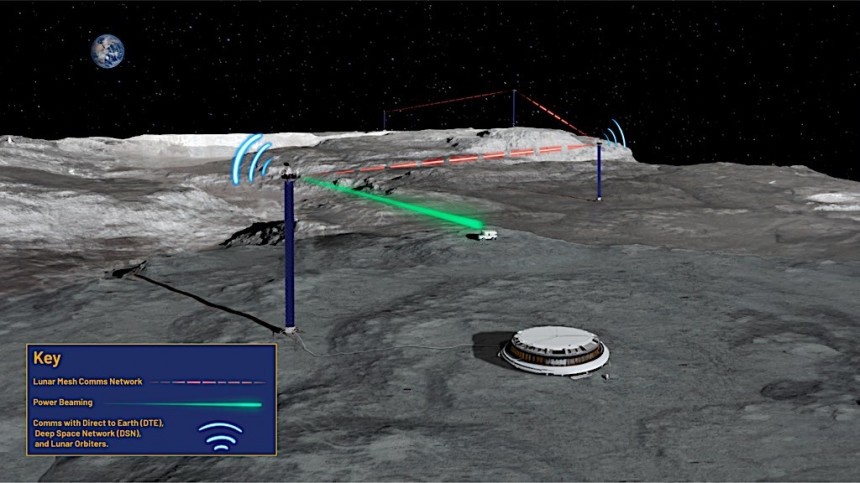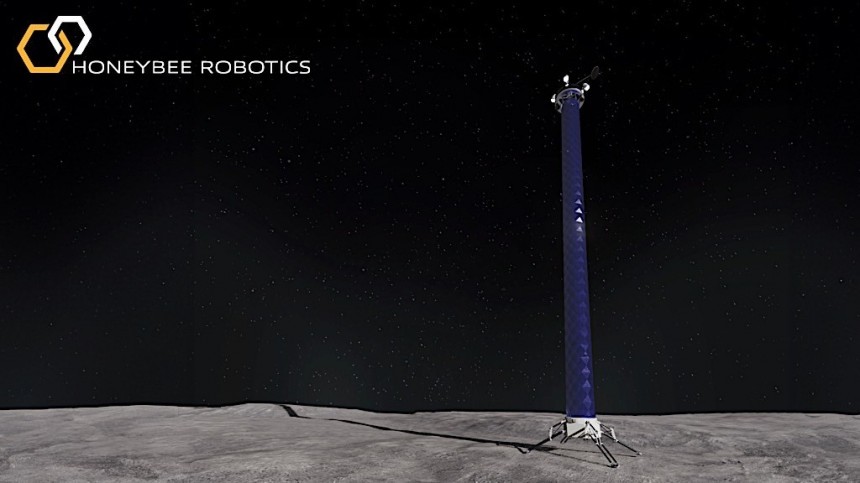December 2023 brought with it something I feel may forever change the way future human Moon missions and settlements will be shaped: for the first time ever someone decided it would be a great idea to approach future Moon exploration plans from a coordinated and integrated perspective, instead of letting anyone with an interest in the place do things their own way.
That someone is American research agency DARPA, which in the summer of this year announced the start of a program meant to "rapidly develop foundational technology concepts that move away from individual scientific efforts within isolated, self-sufficient systems, toward a series of shareable, scalable systems that interoperate."
What that means is DARPA is looking for technological innovations that could allow several systems to operate from the same place, in a bid to share the limited resources the future lunar astronauts will have at their disposal.
So, instead of having individual systems being developed for individual needs, DARPA is seeking ideas that bundle systems together in a single, more compact, and easily accessible package.
Still confused about what that means? Consider this: why have separate systems and infrastructure to allow for communications, navigation, and power generation, when you can solve all those needs with a single, unified piece of tech?
The DARPA program is called the 10-Year Lunar Architecture Capability Study (LunA-10), and earlier this month it announced the participating companies. Big names of this industry are featured on the list, including NASA partners Blue Origin and SpaceX, but also smaller companies that may forever change the way we believe space exploration should be done.
There are a total of 14 companies on the list of participants, all of them fighting to come up with the best ideas to solve issues in the field of lunar transit and mobility, energy, communications, and infrastructure.
Of the entire batch of participants just two of them already made public their ideas for the study. The first was Firefly Aerospace, which plans to use its Elytra spacecraft design to create docking hubs at the Earth-Moon Lagrange points and it lunar orbit.
Once docked with the hubs, the spacecraft will be able to perform fuel transfer, share power and thermal resources, payload delivery, cargo transfer, and de-orbiting services.
The second company that announced its idea for LunA-10 is Honeybee Robotics, which presented this week something called Lunarsaber. That's a fancy name for something that may be considered a glorified lamp post.
Lunarsaber is a much-needed acronym for a piece of technology that's called in full Lunar Utility Navigation with Advanced Remote Sensing and Autonomous Beaming for Energy Redistribution. I know, a hard to digest name, so let's break it down a bit.
First, the hardware itself. The Lunarsaber is essentially a very tall pole, towering up to 328 feet (100 meters) above the surface of the Moon. The thing is not fixed, as it sits on stilts and it can be deployed to a location where it's needed, as soon as it's needed.
The mast, as Honeybee calls it, is based on a piece of technology named Diablo. That too is short for something, in this case Deployable Interlocking Actuated Bands for Linear Operations, and in this case the full name is pretty revealing in terms of what it is supposed to do.
This overgrown pole will be covered in solar panels and at its top will sit gimbaled lights that will be used to bring brightness during the two-weeks long lunar nights.
But that's not all this fancy street light is supposed to do. True to its LunA-10 goal, it will also be able to store and transfer the energy it captures from the Sun.
Further still the Lunarsaber will be built in such a way as to act as a communications relay, provide mesh network support, act as a position, navigation and timing beacon and, if such a need ever arises, even work as a surveillance tower.
At its base the mast will provide the required gear for commercial services to interface with it, for whatever needs drive them to do that.
Honeybee did not say how far along it is with the development of the Lunarsaber system. As per DARPA's study requirements, all companies taking part will have to present a brief of their ideas by April next year, and a final report in June.
DARPA is not giving funds to any of the involved parties, as it only wants to be a sort of facilitator or driving force for such ideas to come into the spotlight. Some sort of economic expertise will however be available for those interested.
Like many other such concentrated efforts, the LunA-10 has a lot of potential for being a generator of some truly out-of-this-world ideas. Stay tuned over the following weeks as we dive deeper into as many of them as possible.
What that means is DARPA is looking for technological innovations that could allow several systems to operate from the same place, in a bid to share the limited resources the future lunar astronauts will have at their disposal.
So, instead of having individual systems being developed for individual needs, DARPA is seeking ideas that bundle systems together in a single, more compact, and easily accessible package.
Still confused about what that means? Consider this: why have separate systems and infrastructure to allow for communications, navigation, and power generation, when you can solve all those needs with a single, unified piece of tech?
The DARPA program is called the 10-Year Lunar Architecture Capability Study (LunA-10), and earlier this month it announced the participating companies. Big names of this industry are featured on the list, including NASA partners Blue Origin and SpaceX, but also smaller companies that may forever change the way we believe space exploration should be done.
There are a total of 14 companies on the list of participants, all of them fighting to come up with the best ideas to solve issues in the field of lunar transit and mobility, energy, communications, and infrastructure.
Once docked with the hubs, the spacecraft will be able to perform fuel transfer, share power and thermal resources, payload delivery, cargo transfer, and de-orbiting services.
The second company that announced its idea for LunA-10 is Honeybee Robotics, which presented this week something called Lunarsaber. That's a fancy name for something that may be considered a glorified lamp post.
Lunarsaber is a much-needed acronym for a piece of technology that's called in full Lunar Utility Navigation with Advanced Remote Sensing and Autonomous Beaming for Energy Redistribution. I know, a hard to digest name, so let's break it down a bit.
First, the hardware itself. The Lunarsaber is essentially a very tall pole, towering up to 328 feet (100 meters) above the surface of the Moon. The thing is not fixed, as it sits on stilts and it can be deployed to a location where it's needed, as soon as it's needed.
The mast, as Honeybee calls it, is based on a piece of technology named Diablo. That too is short for something, in this case Deployable Interlocking Actuated Bands for Linear Operations, and in this case the full name is pretty revealing in terms of what it is supposed to do.
But that's not all this fancy street light is supposed to do. True to its LunA-10 goal, it will also be able to store and transfer the energy it captures from the Sun.
Further still the Lunarsaber will be built in such a way as to act as a communications relay, provide mesh network support, act as a position, navigation and timing beacon and, if such a need ever arises, even work as a surveillance tower.
At its base the mast will provide the required gear for commercial services to interface with it, for whatever needs drive them to do that.
Honeybee did not say how far along it is with the development of the Lunarsaber system. As per DARPA's study requirements, all companies taking part will have to present a brief of their ideas by April next year, and a final report in June.
DARPA is not giving funds to any of the involved parties, as it only wants to be a sort of facilitator or driving force for such ideas to come into the spotlight. Some sort of economic expertise will however be available for those interested.
Like many other such concentrated efforts, the LunA-10 has a lot of potential for being a generator of some truly out-of-this-world ideas. Stay tuned over the following weeks as we dive deeper into as many of them as possible.







